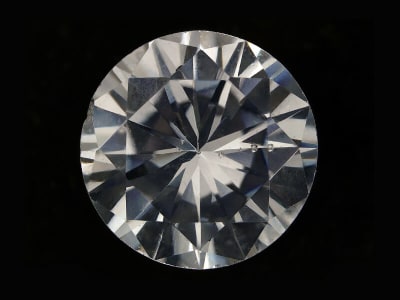Gadolinium gallium garnet, thankfully abbreviated to GGG, is a man-made diamond simulant that entered the market in the 1960's. Today it is rarely used as a gemstone, and is instead manufactured for optical and industrial uses. The Czochralski method of gem synthesis involves the melting of various elements in a platinum crucible. A small gem crystal (called a seed) and attached to a rod is then dipped into the melt and slowly pulled away as the crystal grows around the seed. For this reason, the Czochralski method is also known as crystal pulling. Synthetic gems have the same chemical, optical, and physical properties of their natural counterparts, but are a more cost-effective alternative to a natural gem.
General Information
LWUV: Inert to moderate orange
Gadolinium Gallium Garnet (GGG) Colors
-
 Blue
Blue -
 Brown
Brown -
 Colorless
Colorless -
 Green
Green -
 Pink
Pink -
 Purple
Purple -
 Red
Red -
 Yellow
Yellow
Gadolinium Gallium Garnet (GGG) Spectra
We acknowledge the significant scientific contributions of John S Harris, FGA to the study of gemstone spectra and with deep appreciation to him, acknowledges the use of his images and related notes about gemstones and their spectra in the educational materials on this website.
Countries of Origin
Unknown
Care
Normal care, the toughness is fair to poor so care must be taken to avoid abrasions.



